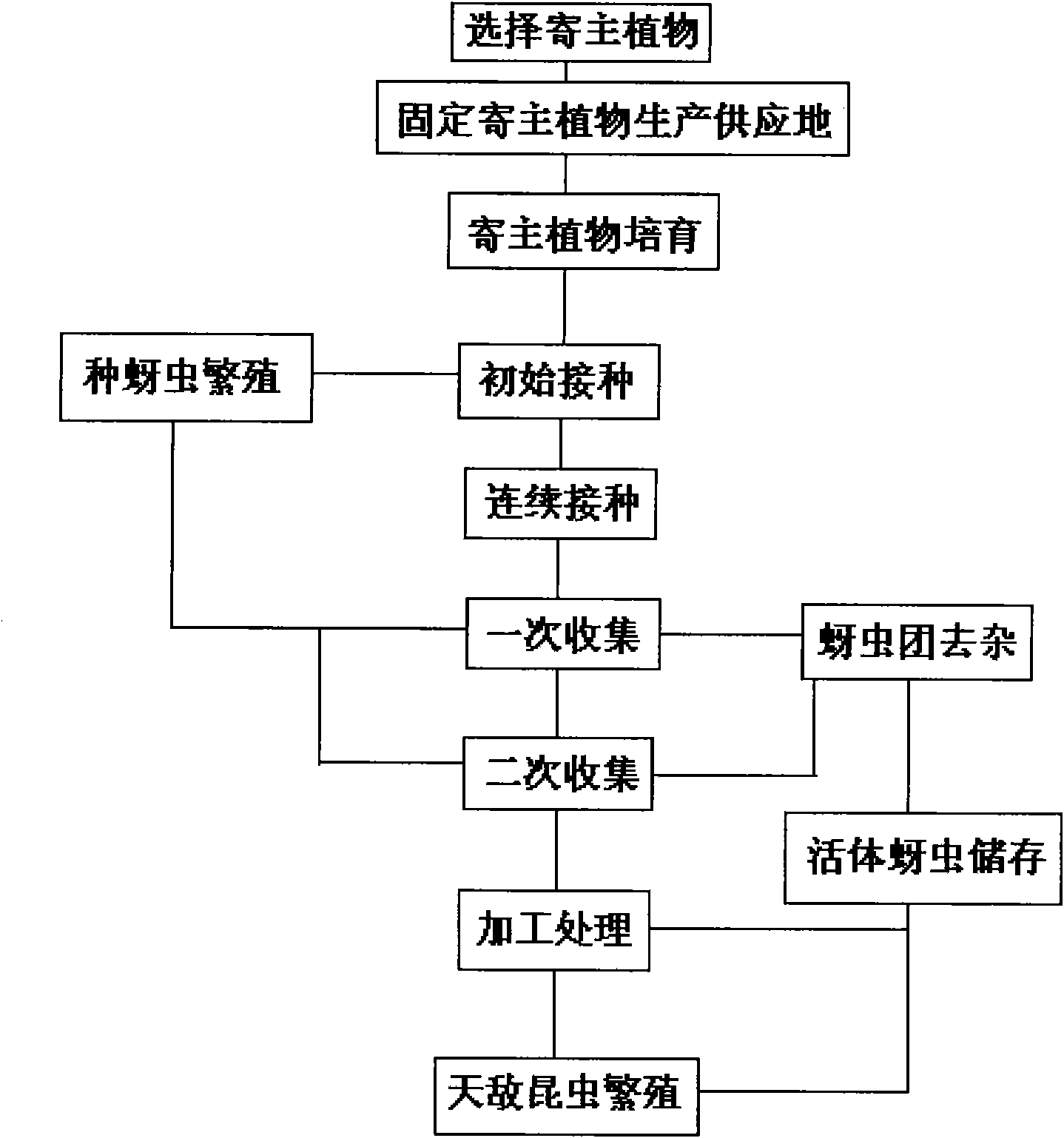Artificial aphid propagation method
A technology of artificial breeding and aphids, applied in the direction of application, animal feed, animal feed, etc., can solve the problems of inability to carry out mass production, difficulty in controlling natural enemy insects, difficulty in ensuring temperature and humidity, etc., and achieve easy calculation of quantity and further application and collection methods Simple, fast, low-cost and standardized effects
- Summary
- Abstract
- Description
- Claims
- Application Information
AI Technical Summary
Problems solved by technology
Method used
Image
Examples
Embodiment 1
[0029] Embodiment 1, aphid artificial propagation production method
[0030] 1. Cultivation of host plants
[0031] Two pea varieties, Lhasahei and Qingshuihe, which were produced in the Bashang area of Zhangjiakou, Hebei Province, were selected as host plants for the propagation of aphids. The two peas have the advantages of fast germination, soaking resistance, uniform growth rate, dark light resistance, fast growth rate after aphids feed on them, easy standardized cultivation, low cost and storage resistance.
[0032] The experiment was repeated three times, and the experimental method for each repetition was as follows:
[0033] Soak the above two kinds of peas in clear water for 8 hours respectively. If the soaking time is too short, the peas will not germinate neatly, and if the soaking time is too long, it will cause rot. Put the soaked peas above into the seedling trays respectively. The schematic diagram of the seedling trays is as follows: figure 2 As shown, wh...
PUM
 Login to View More
Login to View More Abstract
Description
Claims
Application Information
 Login to View More
Login to View More - R&D
- Intellectual Property
- Life Sciences
- Materials
- Tech Scout
- Unparalleled Data Quality
- Higher Quality Content
- 60% Fewer Hallucinations
Browse by: Latest US Patents, China's latest patents, Technical Efficacy Thesaurus, Application Domain, Technology Topic, Popular Technical Reports.
© 2025 PatSnap. All rights reserved.Legal|Privacy policy|Modern Slavery Act Transparency Statement|Sitemap|About US| Contact US: help@patsnap.com


